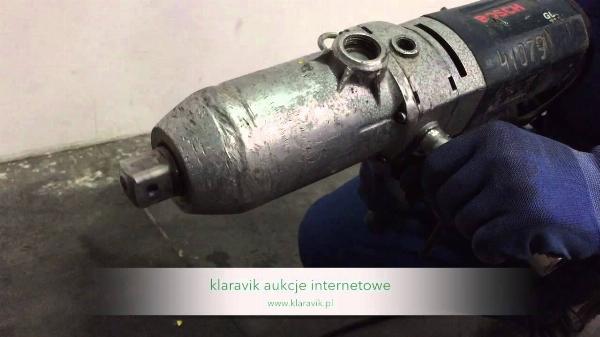Exploring the History and Evolution of Impact Wrench Technology:

Strong 8k brings an ultra-HD IPTV experience to your living room and your pocket.
Impact wrenches, those powerful tools that effortlessly tighten and loosen bolts, have become indispensable in various industries and DIY projects. However, their journey from inception to modern-day efficiency is a fascinating tale of innovation and technological advancement.
The Early Days:
In the early 20th century, as industries burgeoned, the need for more efficient tools became apparent. It was during this time that the first rudimentary impact wrenches emerged. These early models were often pneumatic and operated using compressed air. They were bulky, noisy, and lacked the precision of their contemporary counterparts.
The Rise of Pneumatic Impact Wrenches:
Pneumatic impact wrenches gained popularity in automotive assembly lines during the mid-20th century. Their ability to deliver high torque with minimal effort revolutionized production processes. These wrenches featured a hammer mechanism that delivered sudden impacts to the output shaft, enabling rapid tightening or loosening of bolts and nuts.
Electric Impact Wrenches Enter the Scene:
As technology advanced, electric impact wrenches began to gain traction. Unlike their pneumatic counterparts, electric impact wrenches were more portable and didn't require an air compressor, making them suitable for a broader range of applications. These early electric models were often corded, limiting their mobility but offering consistent power output.
The Advent of Cordless Impact Wrenches:
With the advent of battery technology, cordless impact wrenches emerged as a game-changer. These tools offered the portability of electric wrenches without the hassle of cords. Lithium-ion batteries provide ample power and runtime, allowing users to work efficiently without being tethered to a power source. Cordless impact wrenches quickly became popular among mechanics, construction workers, and DIY enthusiasts alike.
Advancements in Design and Ergonomics:
In addition to technological advancements, impact wrenches underwent significant improvements in design and ergonomics. Manufacturers focused on reducing weight, enhancing grip comfort, and incorporating features such as variable speed triggers and LED lights for better user experience. These ergonomic enhancements not only increased productivity but also reduced user fatigue during prolonged use.
Impact Wrenches in the Digital Age:
In recent years, the integration of digital technology has further enhanced the capabilities of impact wrenches. Smart features such as Bluetooth connectivity and smartphone compatibility enable users to monitor tool performance, track usage metrics, and receive maintenance reminders remotely. These digital enhancements improve efficiency, accuracy, and tool longevity, making them invaluable assets in professional and industrial settings.
Impact Wrenches in Specialized Industries:
While impact wrenches are commonly associated with automotive repair and construction, they have found applications in various specialized industries. From aerospace maintenance to wind turbine installation, impact wrenches play a crucial role in fastening and assembly tasks where precision and reliability are paramount. Specialized variants, such as high-torque and angle impact wrenches, cater to specific needs in these industries.
Impact Wrenches in the DIY Community:
In addition to professional use, impact wrenches have gained popularity among DIY enthusiasts and hobbyists. Whether it's automotive maintenance, furniture assembly, or home improvement projects, these versatile tools offer convenience and efficiency. With the availability of affordable and user-friendly models, more DIYers are incorporating impact wrenches into their tool arsenal.
The Future of Impact Wrench Technology:
As technology continues to advance, the future of impact wrenches looks promising. Innovations such as brushless motors, advanced battery chemistries, and predictive maintenance algorithms are poised to further improve performance, durability, and user experience. Additionally, the integration of artificial intelligence and machine learning may enable impact wrenches to adapt dynamically to different fastening scenarios, optimizing efficiency and accuracy.
Final Thoughts:
From humble beginnings to indispensable tools in various industries, impact wrenches have come a long way in terms of technology and functionality. The evolution of these tools reflects the relentless pursuit of efficiency, productivity, and user satisfaction. As we look toward the future, it's exciting to anticipate how further advancements will continue to shape the landscape of impact-wrench technology.
Note: IndiBlogHub features both user-submitted and editorial content. We do not verify third-party contributions. Read our Disclaimer and Privacy Policyfor details.




